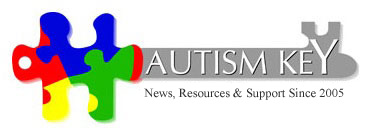Art Therapy for Autism
Individuals with autism have innate visual prowess, as I discussed in a previous article. Given that children with autism are so visually oriented, it makes perfect sense to engage them in art activities, be it formally with an art therapist, casually in other classes or at home.
Because children on the autism spectrum struggle with communication, traditional psychotherapy is not a viable option for them, but art therapy is. Art therapists report that children with autism who engage in one-on-one sessions show an improved ability to imagine and think symbolically, enhanced ability to recognize and respond to facial expressions, new ability to manage sensory issues such as a range of texture and greater fine motor skills.
I used to teach art to preschoolers at community centers. The classes were educational in nature and centered around a theme such as dinosaurs. I had them make things to illustrate what they were learning, like paper mache giant eggs and clay replicas of foot-long pointed teeth. The comment I heard from most parents was that they couldn’t believe their child’s focus and intensity while in my class. They marveled that their child was capable of such intentionality and that they could sustain it for a whole hour.
Several of the students came with diagnoses such as ADD or autism, another had been too frenetic and kicked out ballet class, but you wouldn’t know it — all of them coalesced as a group of dedicated youngsters excited by their art projects. The group became close and the children often went to the playground together after class.
Art demands a level of organization. Children must set up their supplies and clean up afterwards. The many textures are a sensory feast, and for kids with autism, innately therapeutic. I fondly remember how much my sons loved making homemade clay, the feeling of kneading the warm dough, then folding in the colors. I kept easels set up on the porch and they painted nearly everyday. Doing art fostered pride in themselves and their creations.
As individuals who struggle with communication, art gives children on the autism spectrum a powerful means to channel their inner life and experience. At home, you could have your child make his or her own guide to feelings by having them draw pictures of “Happy," “Sad," “Scared," “Mad" or “Frustrated” faces. Laminate or otherwise protect the pictures and have them on hand for your child to identify how he or she is feeling when words cannot. Buy them a sketch book and encourage them to keep a daily art journal. Creative self expression in all its myriad forms is going to be a key to enhancing your child’s well-being.
“Drawing Autism” is a collection of artwork by individuals with autism coupled with interviews of the artists, with a forward by Temple Grandin. It’s a powerful book and in reading it one comes away with an even deeper appreciation of that superior autistic visual ability we’ve been hearing about. More information on the book can be found here: https://markbattypublisher.com/books/drawing-autism/.
Additionally, an organization that focuses exclusively on art therapy for autism is Philadelphia-based HeARTS for Autism.They are a grass-roots,
volunteer organization and can be found at https://www.heartsforautism.org.

